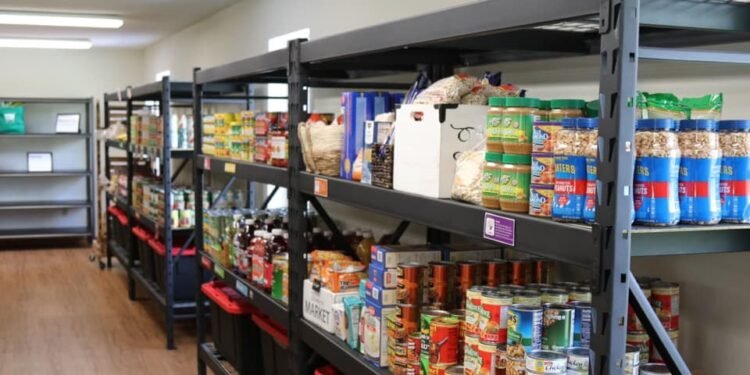Smart Practices: How to Keep Your Restaurant Pantry Stocked Without Going Over Budget

It’s essential to practice smart habits in business even if the world is not experiencing an economic recession (which it is, as of the moment). These are your business’s best strategies for staying competitive and ensuring longevity for your operations.
Unfortunately, in the food service industry, there are prevalent problems caused by bad practices that are leaving restaurants in the red. One of the main problems faced by food businesses such as restaurants and cafes is wastage. This is evident in food districts around the world. Waste collectors say that it’s rather common for them to see a variety of ingredients thrown out that are merely spoiled, which translates to money wasted.
This is quite surprising, considering how restaurant managers and staff have on-hand skills that could enable them to maximize the use of various ingredients. Also, one of the inherent responsibilities of today’s dining establishments is to come up with creative recipes to ensure the smart use of all items in the restaurant pantry.
How to Keep a Well-Stocked Pantry and Prevent Waste
Therefore, for restaurants that want to stay afloat during these economically uncertain times, one of the best practices for protecting the business’s finances is to maintain a “thoughtful” pantry. This will not only get rid of the wastage problem but also help the restaurant control its spending.
Here are some of the best tips when it comes to maintaining a thoughtful and no-waste pantry in restaurants:
1. Take advantage of money-saving deals, but not all of them.
It’s always a good idea to keep your eyes open for deals that can save you money. For example, food companies in Damman offer select products at wholesale prices. Take advantage of these for the ingredients that you regularly use for the best-selling dishes. Don’t buy everything wholesale, though, because it’s possible that you won’t be able to use them all up before their “best before” dates.
The key here is to clearly establish what’s worth buying wholesale and what’s not. If you’re purchasing exotic products wholesale and you end up not using them all because diners do not take to them well, you’re really just throwing away money.
2. Use an inventory app.
Use the latest restaurant management technology, such as an inventory app. Through this technological program, you’ll be able to see how quickly or slowly certain products are moving in your pantry. Therefore, you can replenish your pantry in a more organized and budget-compliant way.
With an inventory app, you get to keep a record of the items that you need to try and products that you should never purchase again.
3. Create a challenge for your chefs to utilize pantry items that are slow-moving or not moving at all.
Biz Trends, a business report show on NHK World, shares one of the clever ways that startup restaurants stay on budget with food ingredients and avoid wastage: by challenging their chefs and cooks to come up with a limited-offer menu using slow-moving or non-moving pantry items.
This is not just an opportunity to turn potential waste into income for the restaurant. It has proven to be a chance to study the market further. With the limited menu, they get to gauge if customers are ready for a change or not and if there are rarely used ingredients that can be quite trendy if given the right treatment or exposure.
It’s worth mentioning as well that such a challenge can be fun for the restaurant. In some dining establishments, these are special events that customers even sign up to witness and participate in.
4. Establish your restaurant’s multipurpose ingredients.
Multipurpose ingredients are some of the pantry items that you should always buy wholesale. Some of these are cream, baking soda, and white vinegar.
Cream, for instance, can be used in a variety of dishes and drinks. You can also turn it into butter, which has numerous applications for cooking. There’s also the option of creating buttermilk for pancakes, chicken batter, and baked treats. Cream is certainly a product that has a specific purpose for dishes but can also serve as a fantastic substitute for when you run low on other cooking essentials.
As for white vinegar, you can use this for a wide range of recipes, but you can likewise use it as an all-purpose cleaner in the kitchen (especially when you combine it with baking soda). And, if your restaurant has a thriving edible garden, vinegar is what you need to banish weeds.
5. Don’t ever buy “more” fresh fruits and vegetables.
It’s best to buy these items fresh rather than to stock up on them, unless you intend to turn them into jam or pickles. Highly perishable produce is the most commonly wasted ingredient by restaurants. Not only that, but they can also breed sanitation issues if not used right away. Therefore, buy them as needed instead of stockpiling them in the pantry; make sure not to keep them for more than two days.
6. Buy in-season items.
One of the best benefits of buying in-season ingredients is that you get the best-tasting ones at a much more affordable price. This is actually a top reason why many restaurants in the MENA region source their shellfish and meats from Bidfood Middle East. It’s because this leading food company always makes sure to provide the best deals on seasonal ingredients.
Stay on top of the best ingredients according to the seasons, and you will undoubtedly keep your expenses under control while keeping your pantry well-stocked. If you are worried about their shelf-life or freshness, explore natural preservation strategies such as canning, pickling, and dehydrating.
Smart Pantry Management Will Keep Your Restaurant Afloat
During these troublesome economic times, it has become even more crucial to be as meticulously intentional and organized as possible. This is a tried and true strategy for restaurants that want to stay afloat. Therefore, pay closer attention to how your restaurant manages its pantry. This effort alone can save your business a considerable amount of money. At the same time, it can reinvigorate your menu and keep your chefs and cooks inspired.
This is not a difficult task to stay on top of, especially if you create a system that will involve everybody in the operations. Once you have a system for pantry management set up, your employees can go about this beneficial task more intentionally, and eventually, the task will become a habit.
AUTHOR BIO
Jad Asaad is the Marketing Manager at Bidfood UAE with more than eight years of experience in digital, online and offline marketing. He started his career in Beirut working in a creative agency and then moved to Dubai to further expand his career. He created and implemented award-winning high-impact digital and offline marketing campaigns that consistently generated revenue streams and improved performance in targeted segments.






